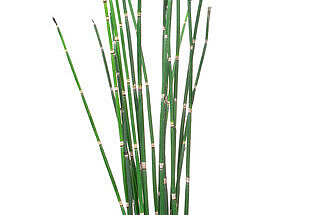Ferns

What are ferns?
Ferns are a group of around 10,000 known plant species that are characterized by their unique leaf structures, also known as fern fronds. They are among the oldest plants in the world and have evolved since the Devonian period, around 360 million years ago. Ferns reproduce via spores and can be found in a wide variety of habitats, from deep forests to dry desert regions.
The nutritional physiology of ferns
Despite their wide distribution in nature, ferns are not typically included in commercial dog diets. However, they do contain a number of nutrients that can potentially provide health benefits for dogs. These nutrients include vitamins such as vitamins A and C, minerals such as iron and potassium, and antioxidants that may play a role in disease prevention.
Benefits of feeding ferns to dogs
Natural source of nutrients
Ferns can serve as a natural supplement to a balanced diet. The vitamins and minerals they contain support a range of bodily functions, from boosting the immune system to promoting healthy skin and a shiny coat.
Antioxidant properties
The antioxidants found in ferns help to protect cells from free radical damage. This can help prevent chronic diseases in the long term and promote the overall well-being of the dog.
Disadvantages and risks
Toxicity of some fern species
Not all fern species are safe for dogs. Some, such as bracken fern, can contain toxic substances that can lead to symptoms of poisoning. It is therefore essential to have detailed knowledge of the fern species being fed and to ensure that they are safe for dogs.
Digestive problems
Ferns are high in fiber, which can cause digestive problems such as bloating, diarrhea or constipation in some dogs. A slow introduction and observation of individual tolerance are therefore important.
A leaf from prehistoric times with a caveat
Ferns offer an interesting way to enrich our dogs' diets with natural nutrients. Their antioxidant properties and their vitamin and mineral content can offer many health benefits. However, caution is advised: Not all fern species are safe, and individual tolerance varies.
If you notice any signs of hypersensitivity or poisoning in your dog, you should see your vet immediately. We are not a substitute for a vet, but we try to be as accurate as possible. Every dog reacts differently and we recommend you get a second opinion or consult your vet if in doubt.
Stay healthy and take good care of your four-legged friend!😊
Similar to Ferns
Horsetail is a herbaceous plant that belongs to the clubmoss family. It grows mainly on moist and nutrient-poor soils and has a high content of silicic acid, flavonoids, saponins and minerals....
Moss belongs to the group of bryophytes, a type of land plant characterized by its lack of a root system and its simple, often velvety structure. These plants typically grow in moist, shady...
Lycopodium is a genus of plants in the Lycopodiaceae family that are characterized by their unique appearance and survival in different environments. These plants are not moss species, although they...
The common spotted fern, known by its scientific name Polypodium vulgare, is a species of fern found in many parts of the world. It is characterized by its long-lived, evergreen fronds, which make...



